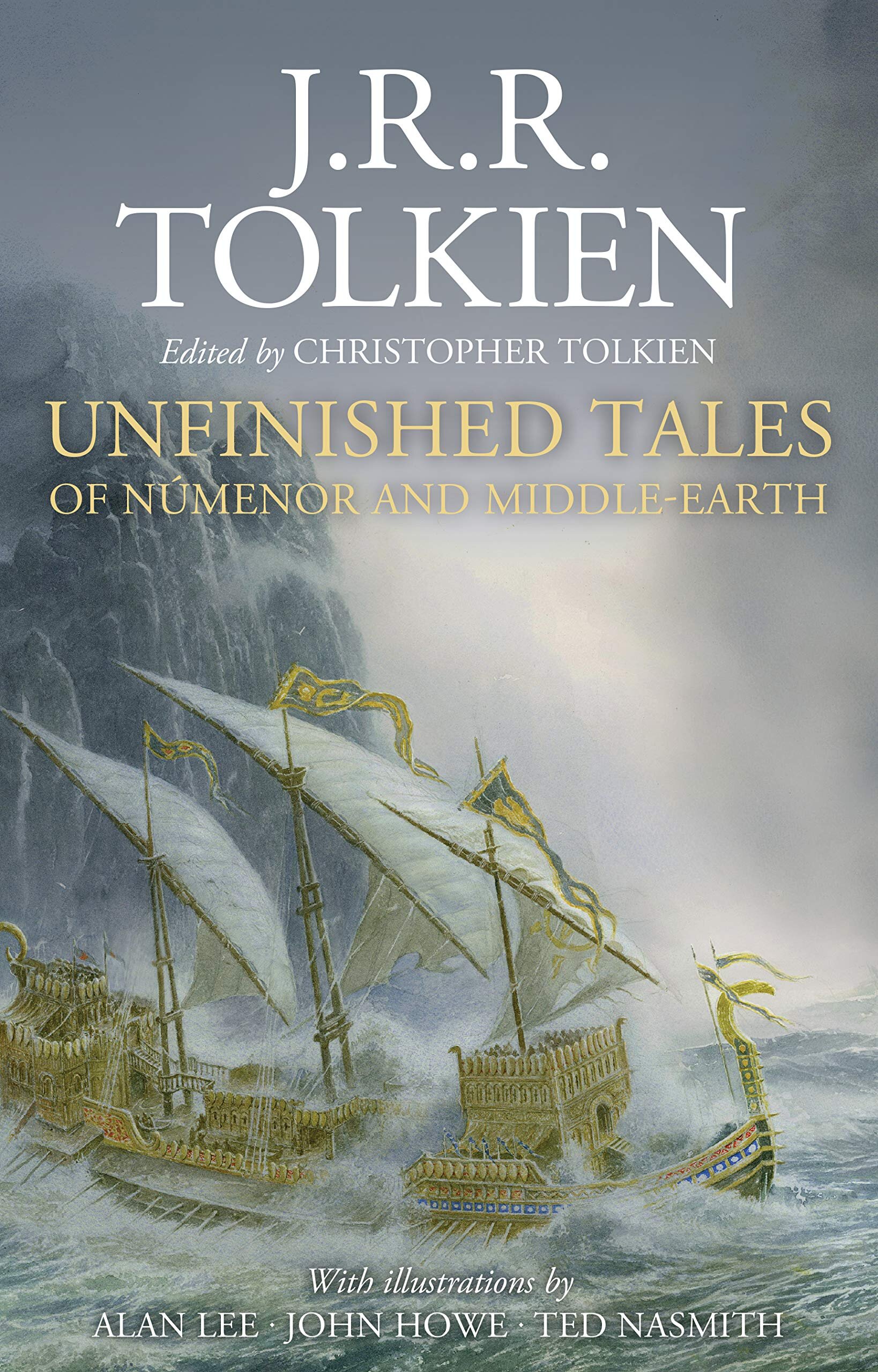The Unfinished Tales of JRR Tolkien
/Unfinished Tales of Numenor and Middle-Earth
By JRR Tolkien
Edited by Christopher Tolkien
Illustrated by Alan Lee, John Howe & Ted Nasmith
Houghton Mifflin Harcourt, 2020
This undeniably odd volume, Unfinished Tales of JRR Tolkien, first appeared forty years ago, and something of its oddness is indicated immediately in the opening paragraph of editor Christopher Tolkien’s Introduction to this miscellany of his father’s unpublished work:
That The Silmarillion should remain unknown was for me out of the question, despite its disordered state, and despite my father’s known if very largely unfulfilled intentions for its transformation; and in that case I presumed, after long hesitation, to present the work not in the form of an historical study, a complex of divergent texts interlinked by commentary, but as a completed and cohesive entity. The narratives in this book are indeed on an altogether different footing: taken together they constitute no whole, and the book is no more than a collection of writings, disparate in form, intent, finish, and date of composition (and in my own treatment of them), concerned with Numenor and Middle-earth.
It’s a maximum of genteel phrasing, certainly. Christopher Tolkien, who died at the beginning of 2020 after an entire career of tending to (and, it should perhaps be noted, assiduously publishing from) his father’s disjecta membra, but as that note indicates, some membra are more disjecta than others. Thanks to Christopher’s masterful editorial thaumaturgy, The Silmarillion, the great epic evocation of what his father’s fans call his legendarium, reads from start to finish in his father’s most epic register. All the signature narrative gifts of JRR Tolkien are on full display, particularly the very modern psychological understanding embedded in the cod-Old Testament diction, and thanks to Christopher Tolkien’s decision to shape the work into “a completed and cohesive entity,” The Silmarillion never feels like a work of literary reconstruction.
That’s simply not possible with the Unfinished Tales. These are fragments in more or less finished condition with no narrative through-line connecting them, which means, among other things, a stark bar of unreadability for the non-fan. The Unfinished Tales is an uneven landscape of short bits and longer stretches, with editor Christopher interjecting his annotations and notes everywhere, letting his readers know exactly what the original notebooks include and don’t include. For fans who understandably can’t get enough of Tolkien’s imaginary world, these notes and fragments are endlessly interesting hints and glimpses of what might have been.
One of the most striking of these glimpses comes early in the volume, when the great warrior Tuor meets the sea-god Ulmo, a direct human-divine encounter of a kind that happens virtually nowhere else in Tolkien’s writing. And there are fascinating moments scattered everywhere else - the wizard Saruman trying to hide his addiction to the pipe-weed of the Shire, the fact that the great dragon Glaurung snores in his sleep, the murky roles of the two wizards we don’t meet in The Lord of the Rings, and so on. Sometimes, very rarely, these fragments can add genuinely interesting nuances to slim details from The Lord of the Rings, as when we get an eloquent and fleshed-out version of the key moment when Isildur, swimming in the river Anduin, loses first the One Ring and then his life:
There suddenly he knew that the Ring had gone where he could never hope to find it again. At first so overwhelming was his sense of loss that he struggled no more, and would have sunk and drowned. But swift as it had come the mood passed. The pain had left him. A great burden had been taken away. His feet found the river bed, and heaving himself up out of the mud he floundered through the reeds to a marshy islet close to the western shore. There he rose up out of the water: only a mortal man, a small creature lost and abandoned in the wilds of Middle-earth. But to the night-eyed Orcs that lurked there on the watch he loomed up, a monstrous shadow of fear, with a piercing eye a star. They loosed their poisoned arrows at it, and fled.
This changes a moment of predictable good-vs-evil into something a bit richer; the orcs act out of fear, neither knowing who it is they kill nor even sticking around long enough to make sure Isildur is in fact dead.
But as noted, such moments are rare, and they’re in any case accessible only to fans already steeped in Tolkien’s lore. For newcomers to that lore, even Christopher Tolkien’s painstaking explanations and this volume’s 18 gorgeous color illustrations will save the proceedings from being as unintelligible as Sumerian cuneiform. This sumptuous anniversary edition of The Unfinished Tales is purely a gift for the initiated. But oh my, such a lovely gift.
—Steve Donoghue is a founding editor of Open Letters Monthly. His book criticism has appeared in The Boston Globe, The Wall Street Journal, The Washington Post, and The American Conservative. He writes regularly for The National, The Vineyard Gazette, and The Christian Science Monitor. His website is http://www.stevedonoghue.com.
